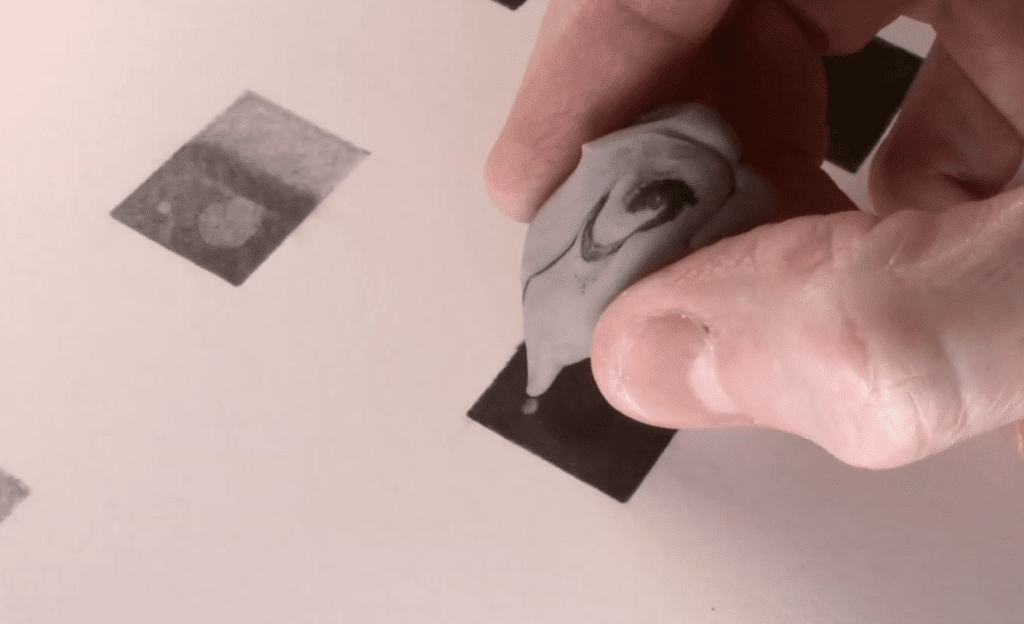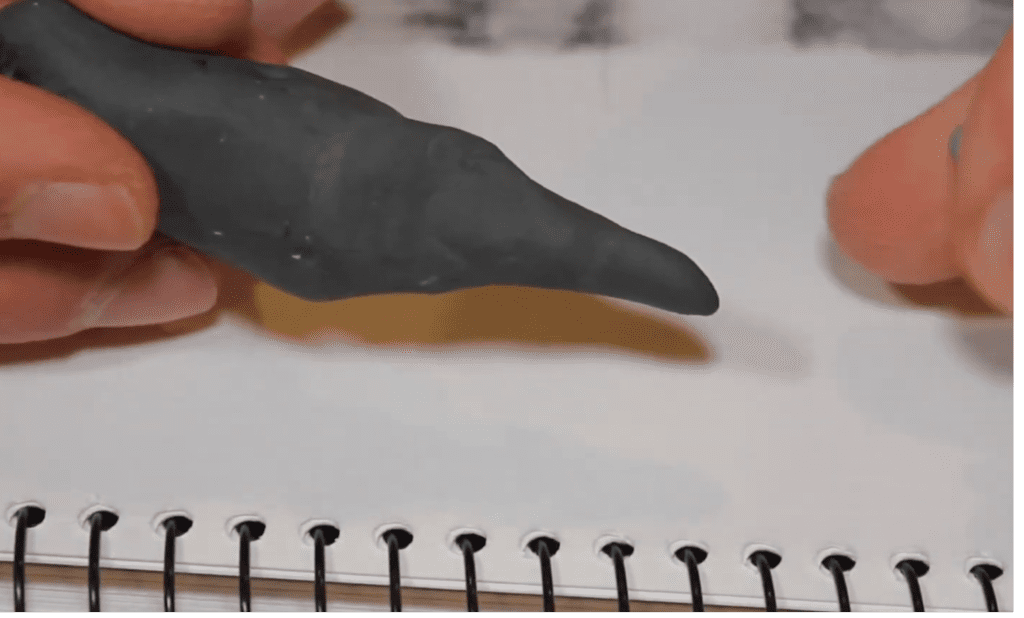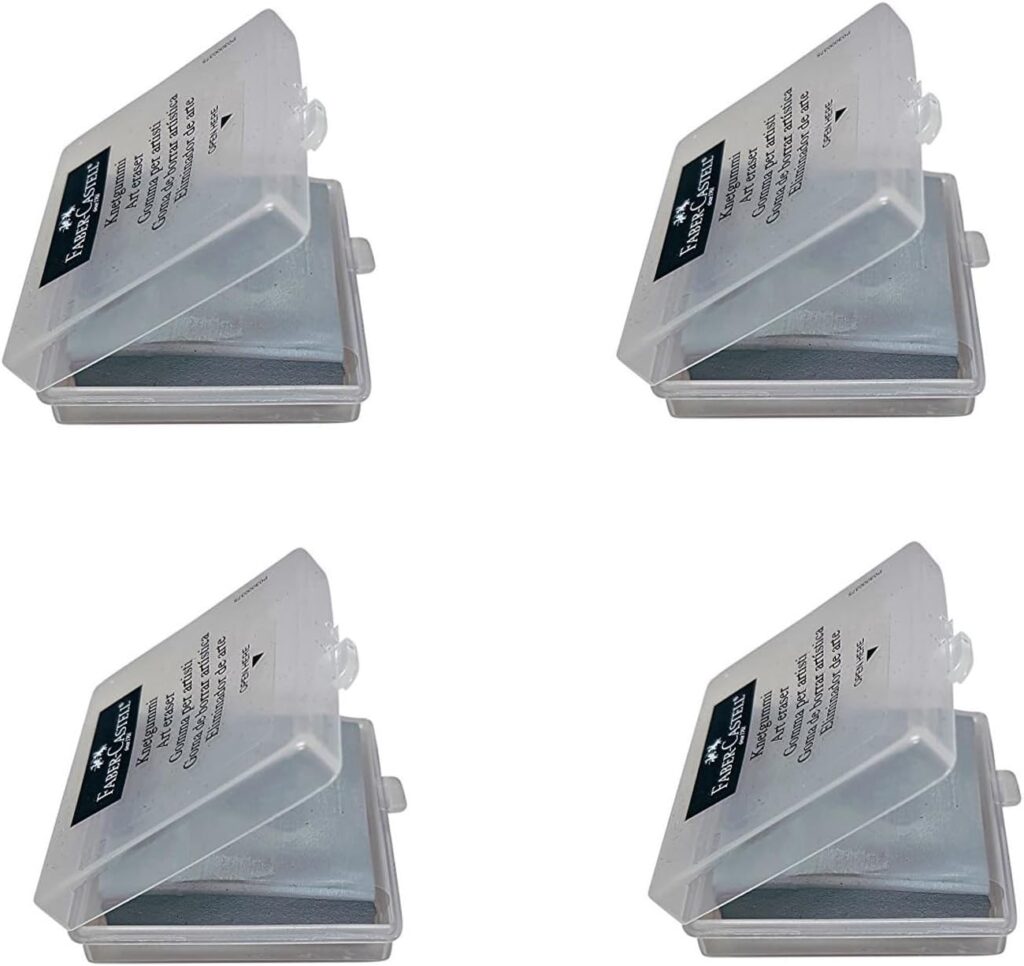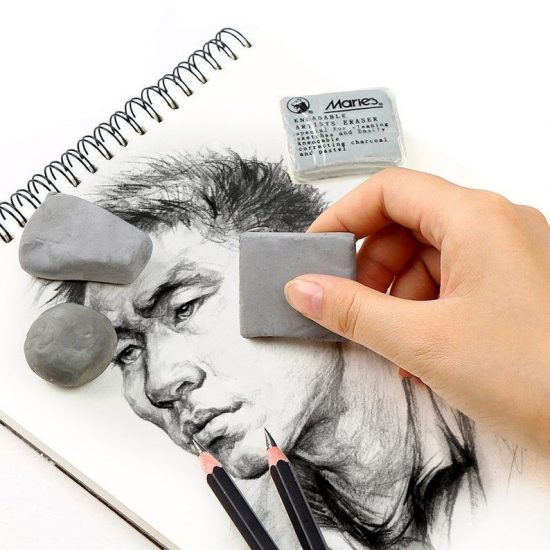The art world is a messy place. Between stray charcoal strokes and errant pencil lines, keeping your page clean can feel like an uphill battle.
But within the world of erasers lies an undisputed champion: the kneaded eraser.


The Mysterious History of Kneaded Erasers
Unlike their pink counterparts, kneaded erasers have a history shrouded in a bit more mystery. While some believe they first appeared in 19th century Germany, there’s no documented inventor or specific birthplace to definitively pinpoint their origin.
What we do know is that the discovery of rubber erasers in 1770 by Englishman Edward Nairne was a game-changer. This paved the way for erasing technology, and kneaded erasers likely followed suit sometime later, possibly emerging in Europe or America during the 19th century.
Early kneaded erasers were likely made from natural rubber, but today’s versions are most commonly crafted from synthetic rubber compounds for better durability.
Regardless of the foggy beginnings, kneaded erasers have become an essential tool for artists, offering a gentle and effective way to manipulate and refine their creations.
Why Knead One? The Benefits of Kneaded Erasers
So, what makes kneaded erasers so special? Let’s us count the ways…
- Moldable Magic: Unlike their rigid brethren, kneaded erasers can be shaped to fit your needs. Need to tackle a tiny speck of graphite? Pinch off a sliver. Want to soften a harsh line? Roll the eraser into a point! This versatility makes them perfect for detailed work.
- The Gentle Touch: Kneaded erasers work by picking up pigment rather than abrading the surface. This gentle touch is ideal for delicate mediums like charcoal and pastel, which can be easily smudged or ripped by harsher erasers.
- No More Crumbs! Say goodbye to eraser dust! Kneaded erasers don’t leave behind any residue, keeping your artwork clean and pristine.
- A Clean Sweep: These erasers are self-cleaning! By simply kneading the eraser, you push the accumulated pigment into the center, renewing its erasing power.
- Long Live the Kneaded Eraser! Unlike traditional erasers that wear down quickly, kneaded erasers last a long time with proper care.
? Tip: Don’t play with it! It’s hard to resist sculpting the eraser like clay (I know!) but it’s best to avoid kneading it more than necessary. The oil in your skin can build up in the eraser and reduce its effectiveness.
How to Use a Kneaded Eraser Like a Pro
Now that you’re sold on the wonders of kneaded erasers, let’s explore how to use them effectively:
- Shape Up! Before you start erasing, take a moment to mold your kneaded eraser into the desired shape. A point is great for precise work, while a flat edge is perfect for larger areas.
- The Gentle Touch: Remember, kneaded erasers work by picking up pigment, so a light touch is key. Don’t scrub – gently roll or dab the eraser over the area you want to erase.
- Keep it Clean: As you erase, the kneaded eraser will pick up pigment. To maintain its effectiveness, periodically knead the eraser to push the used bits into the center.
- Store it Right: When you’re done erasing, store your kneaded eraser in a cool, dry place. Avoid extreme heat, which can cause it to become sticky.


How Long do Kneaded Erasers Last?
Even with regular use we can say that a kneaded eraser should last at least six months. Here are some signs it’s time to retire your trusty tool:
- Losing its effectiveness: Over time, a kneaded eraser will lose its ability to pick up pigment. If it feels greasy or starts to look shiny, consider replacing it.
- Rock Solid: If your once-pliable eraser has become hard and brittle, it’s past its prime.
- Pigment overflow: If it leaves behind pigment residue instead of lifting it, throw that sucker out.
The Best Kneaded Eraser for Artists
Normally we would provide you with a list of great choices and weigh the pros and cons of each. But not today.
The fact is there’s simply no better option than this 4-pack of large kneaded erasers from Faber-Castell. Trust us, we checked.
For $6.59 you get 4 grey, PVC-free kneaded erasers, plus plastic storage cases so they don’t dry out.


With a little care and these tips, your kneaded eraser will be your partner in artistic crime for years to come. Happy erasing! ✏️




